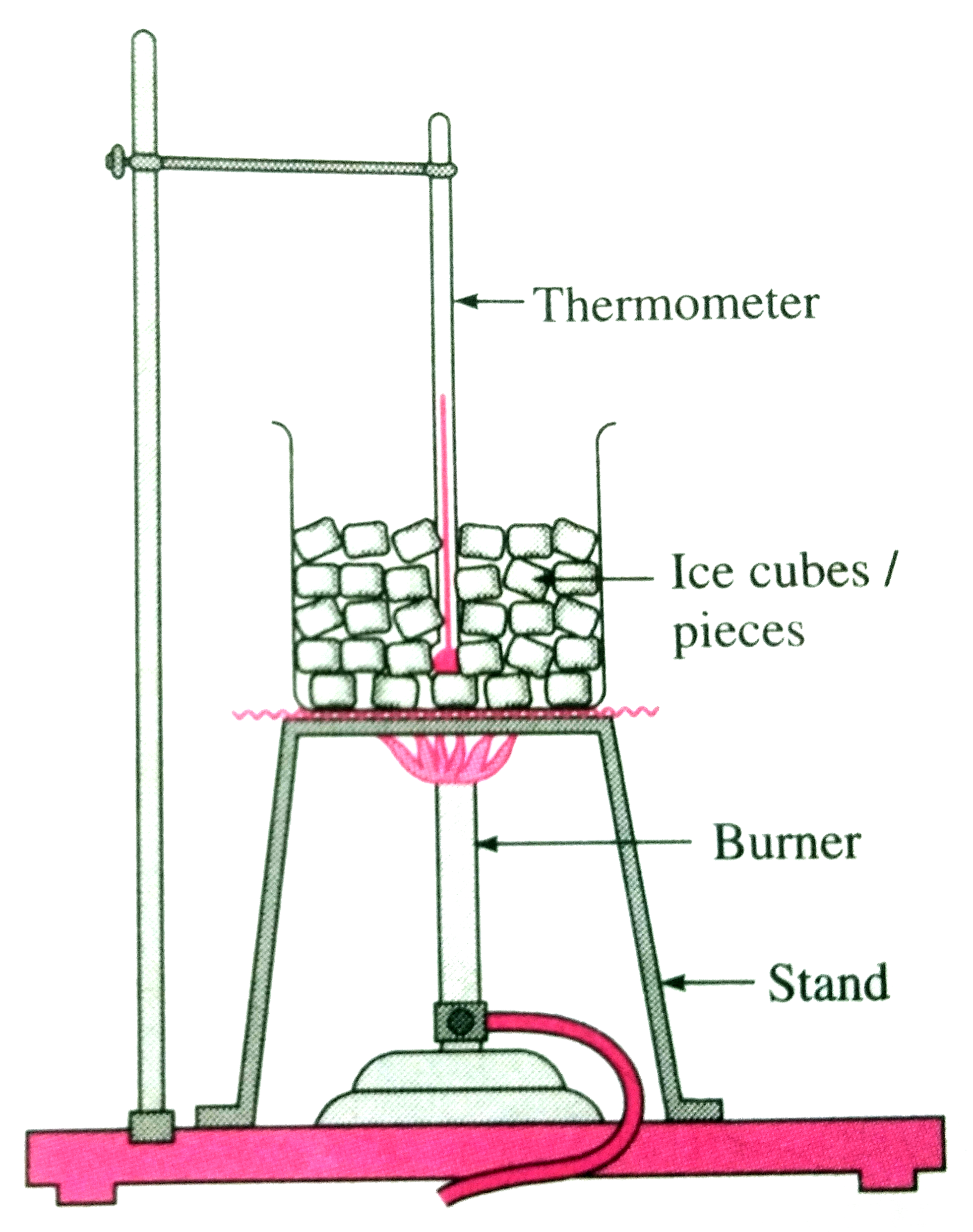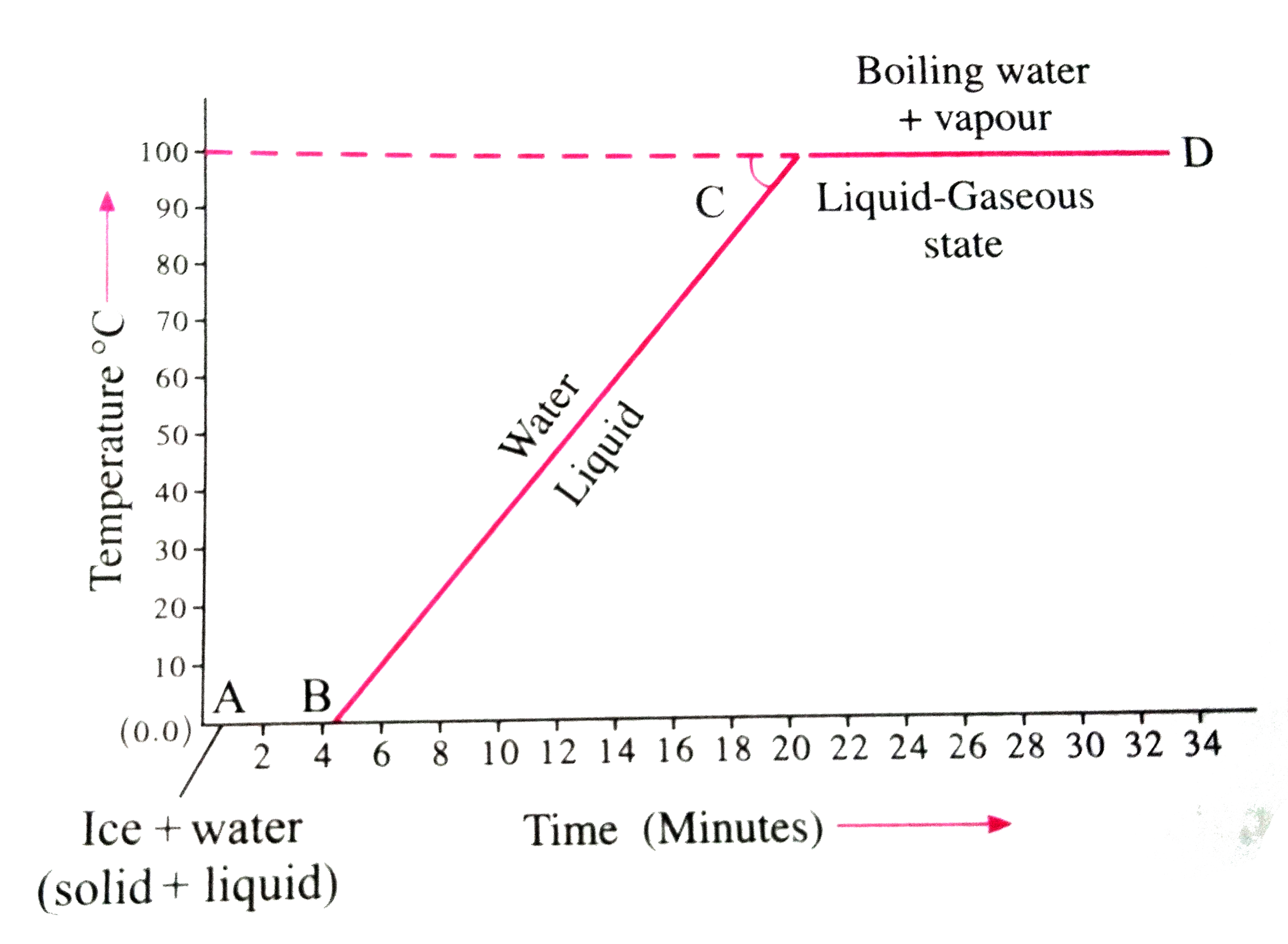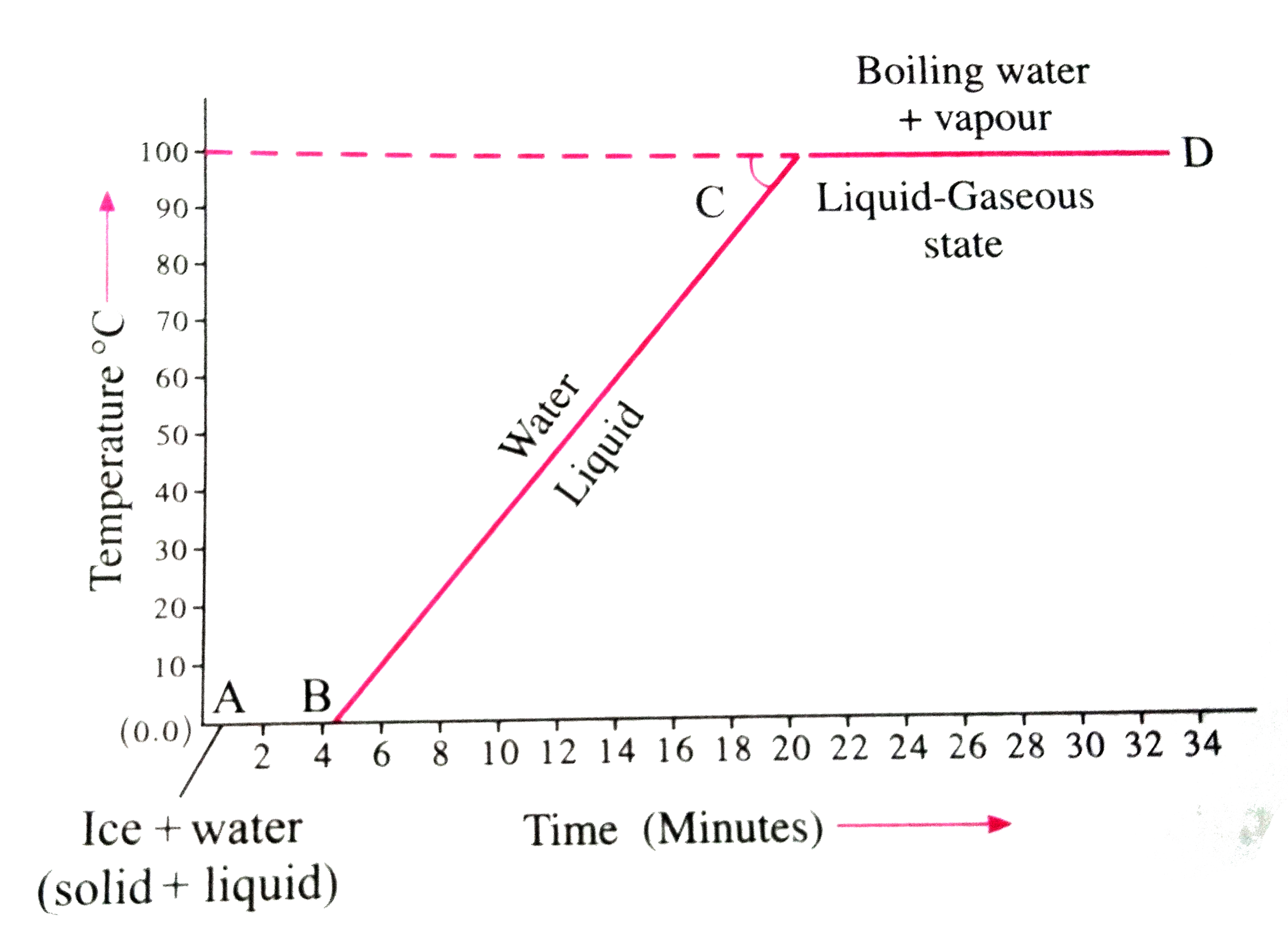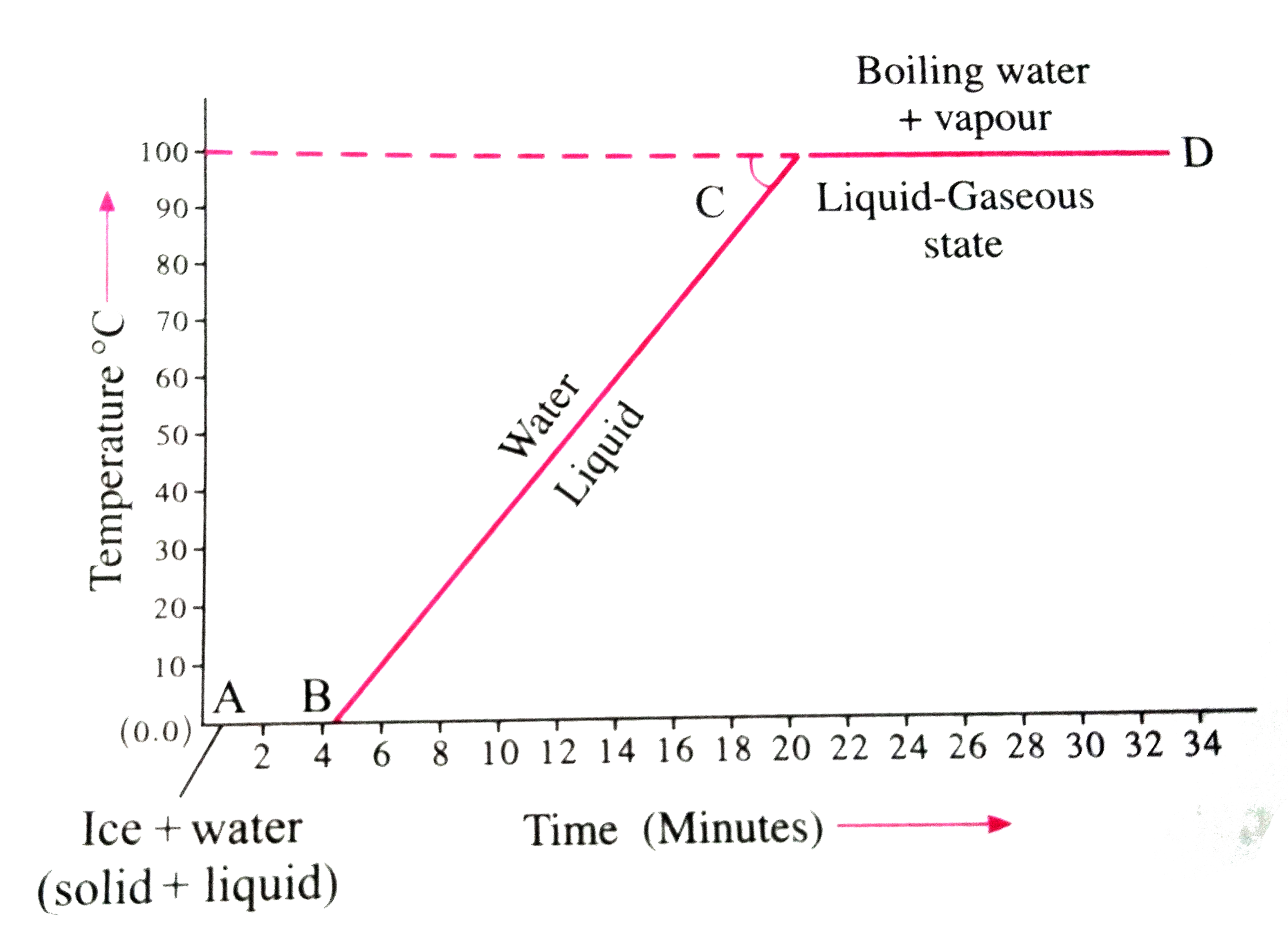Take 2kg of ice is at -5∘ C. Supply heat is continuously to ice. Till it starts boiling. Note the temperature every minute. Draw a graph between temperature and time using the values you get. What do you understand from the graph. Write the conclusions. ( You know that ice melts at0∘c and boils at l00∘CSolution in Tamil
Step by step video & image solution for Take 2kg of ice is at -5^@ C. Supply heat is continuously to ice. Till it starts boiling. Note the temperature every minute. Draw a graph between temperature and time using the values you get. What do you understand from the graph. Write the conclusions. ( You know that ice melts at0^@ c and boils at l00^@C by Physics experts to help you in doubts & scoring excellent marks in Class 9 exams.
Updated on:21/07/2023Topper's Solved these Questions
- HEATBOOK - NCERT TAMILCHAPTER - HEATEXERCISE - Multiple choice questions (Suggested Experiments)
2 Videos
- GRAVITATIONBOOK - NCERT TAMILCHAPTER - GRAVITATIONEXERCISE - Let us Improve our learning (Multiple choice questions) (Suggested projects)
4 Videos
- IS MATTER PURE?BOOK - NCERT TAMILCHAPTER - IS MATTER PURE?EXERCISE - THINK AND DISCUSS
9 Videos
Similar Questions
Perform an experiment to prove that the rate of evaporation of a liquid depends on its surface area and vapor already present in surrounding air write a report.
View SolutionCollect the information about the base area and stability of some objects with different shapes and write a report.
View SolutionHow does a laundry dryer squeezes out water from wet clothes?
View SolutionA student takes 50 g wax (specific heat =0.6 kcal//kg^(@)C ) and heats it till it boils. The graph between temperature and time is as follows. Heat supplied to the wax per minute and boiling point are respectively.
View Solution(1) Take a few pieces of ice in a glass beaker as shown in figure. (2) Insert the bulb of a thermometer in ice and measure its temperature. (3) Put the beaker on a stand and heat the ice usinga burner. (4) Record the temperature using the thermometer after every minute. (5) As the ice is heated,it starts melting. Stir the mixture of ice and water. (6) Continue the heating even after ice starts melting. (7) Draw a graph of temperature versus time. Explain the following temperature vs time graph.
View Solution(1) Take a few pieces of ice in a glass beaker as shown in figure.
(2) Insert the bulb of a thermometer in ice and measure its temperature.
(3) Put the beaker on a stand and heat the ice using a burner.
(4) Record the temperature using the thermometer after every minute.
(5) As the ice is heated,it starts melting. Stir the mixture of ice and water.
(6) Continue the heating even after ice starts melting.
(7) Draw a graph of temperature versus time.
Explain the role of latent heat in the change of state of a substance.

View Solution(1) Take a few pieces of ice in a glass beaker as shown in figure.

(2) Insert the bulb of a thermometer in ice and measure its temperature.
(3) Put the beaker on a stand and heat the ice using a burner.
(4) Record the temperature using the thermometer after every minute.
(5) As the ice is heated,it starts melting. Stir the mixture of ice and water.
(6) Continue the heating even after ice starts melting.
(7) Draw a graph of temperature versus time.

What is meant by latent heat ?How will the state of matter transform if latent heat is given off ?
View Solution(1) Take a few pieces of ice in a glass beaker as shown in figure.

(2) Insert the bulb of a thermometer in ice and measure its temperature.
(3) Put the beaker on a stand and heat the ice using a burner.
(4) Record the temperature using the thermometer after every minute.
(5) As the ice is heated,it starts melting. Stir the mixture of ice and water.
(6) Continue the heating even after ice starts melting.
(7) Draw a graph of temperature versus time.

Define latent heat of fusion
OR
What is latent heat of fusion ? State its units.
View Solution
(1) Take a few pieces of ice in a glass beaker as shown in figure.
(2) Insert the bulb of a thermometer in ice and measure its temperature.
(3) Put the beaker on a stand and heat the ice using a burner.
(4) Record the temperature using the thermometer after every minute.
(5) As the ice is heated,it starts melting. Stir the mixture of ice and water.
(6) Continue the heating even after ice starts melting.
(7) Draw a graph of temperature versus time.

Define specific latent heat of fursion. OR
What is specific latent heat of fusion? State its units.
View Solution(1) Take a few pieces of ice in a glass beaker as shown in figure.

(2) Insert the bulb of a thermometer in ice and measure its temperature.
(3) Put the beaker on a stand and heat the ice using a burner.
(4) Record the temperature using the thermometer after every minute.
(5) As the ice is heated,it starts melting. Stir the mixture of ice and water.
(6) Continue the heating even after ice starts melting.
(7) Draw a graph of temperature versus time.

Explain the term latent heat of vaporization.
View Solution(1) Take a few pieces of ice in a glass beaker as shown in figure. (2) Insert the bulb of a thermometer in ice and measure its temperature. (3) Put the beaker on a stand and heat the ice using a burner. (4) Record the temperature using the thermometer after every minute. (5) As the ice is heated,it starts melting. Stir the mixture of ice and water. (6) Continue the heating even after ice starts melting. (7) Draw a graph of temperature versus time. Define boiling point of a liquid. OR What is boiling point of a liquid ?
View Solution(1) Take a few pieces of ice in a glass beaker as shown in figure. (2) Insert the bulb of a thermometer in ice and measure its temperature. (3) Put the beaker on a stand and heat the ice using a burner. (4) Record the temperature using the thermometer after every minute. (5) As the ice is heated,it starts melting. Stir the mixture of ice and water. (6) Continue the heating even after ice starts melting. (7) Draw a graph of temperature versus time. Define specific latent heat of vaporization. OR What is specific latent heat of vaporization?
View Solution(1) Take a few pieces of ice in a glass beaker as shown in figure. (2) Insert the bulb of a thermometer in ice and measure its temperature. (3) Put the beaker on a stand and heat the ice using a burner. (4) Record the temperature using the thermometer after every minute. (5) As the ice is heated,it starts melting. Stir the mixture of ice and water. (6) Continue the heating even after ice starts melting. (7) Draw a graph of temperature versus time. The specific latent heat of fusion of ice is 80 cal // g .Explain this statement .
View Solution(1) Take a few pieces of ice in a glass beaker as shown in figure. (2) Insert the bulb of a thermometer in ice and measure its temperature. (3) Put the beaker on a stand and heat the ice using a burner. (4) Record the temperature using the thermometer after every minute. (5) As the ice is heated,it starts melting. Stir the mixture of ice and water. (6) Continue the heating even after ice starts melting. (7) Draw a graph of temperature versus time. The specific latent heat of fusion of silver is 88.2kJ //kg . Explain this statement.
View Solution(1) Take a few pieces of ice in a glass beaker as shown in figure.

(2) Insert the bulb of a thermometer in ice and measure its temperature.
(3) Put the beaker on a stand and heat the ice using a burner.
(4) Record the temperature using the thermometer after every minute.
(5) As the ice is heated,it starts melting. Stir the mixture of ice and water.
(6) Continue the heating even after ice starts melting.
(7) Draw a graph of temperature versus time.

The specific latent heat of vaporization of water is 540cal/g. Explain this statement.
View Solution1 किग्रा बर्फ का ताप −5∘C है। सम्पूर्ण बर्फ का पिघलाने के लिए इसे कितनी ऊष्मा की आवश्यकता होगी? दिया है- बर्फ की विशिष्ट ऊष्मा = 0.5 कैलोरी/ग्राम ^∘C , तथा बर्फ के गलन की गुप्त ऊष्मा = 80 कैलोरी/ग्राम।
View Solution
